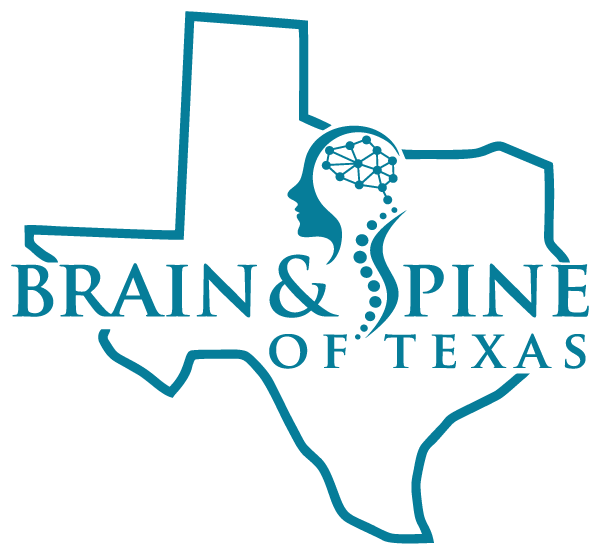Thoracic Fusion
A Proven Solution for Spinal Stability and Pain Relief in the Thoracic Spine
Thoracic fusion is a surgical procedure used to treat conditions affecting the thoracic spine (the middle section of the back) by stabilizing and fusing vertebrae together. This procedure is often necessary for patients suffering from degenerative disc disease, spinal deformities, spinal fractures, or spinal instability. The goal of thoracic fusion is to reduce pain, improve alignment, and restore stability to the spine, ultimately improving the patient’s overall quality of life. At the Brain and Spine Center of Texas, we specialize in advanced spinal surgeries like thoracic fusion to help our patients regain function and alleviate debilitating pain.
The procedure involves the use of bone grafts, screws, and rods to stabilize the affected vertebrae and promote fusion, effectively eliminating motion between the bones. Over time, the bone grafts encourage new bone growth, permanently fusing the vertebrae together. This treatment is highly effective for individuals who suffer from chronic pain caused by spinal instability or structural issues in the thoracic spine.
When is Thoracic Fusion Needed?
Thoracic fusion is typically recommended when conservative treatments, such as physical therapy or pain management, fail to alleviate symptoms of chronic back pain or spinal instability. Common conditions that may require thoracic fusion include:
- Degenerative Disc Disease – When the discs between the vertebrae break down, causing pain, weakness, and instability in the spine.
- Spinal Fractures – Traumatic injuries or fractures in the thoracic spine, often caused by accidents, osteoporosis, or spinal compression fractures.
- Spinal Deformities – Conditions like scoliosis or kyphosis that lead to misalignment or deformity of the spine, resulting in pain and reduced mobility.
- Spinal Instability – Conditions that lead to abnormal movement of the vertebrae, causing nerve compression, pain, and difficulty with daily activities.
For patients experiencing severe and persistent symptoms from these conditions, thoracic fusion can restore stability and prevent further spinal damage.
The Thoracic Fusion Procedure: What to Expect
Thoracic fusion is performed under general anesthesia and can take several hours, depending on the complexity of the case. Here’s a step-by-step overview of the procedure:
- Pre-Surgical Evaluation – Detailed imaging, such as X-rays or MRI, will be conducted to determine the exact location and severity of the condition and guide the surgeon in planning the procedure.
- Incision – A small incision is made in the back or side, depending on the location of the vertebrae to be fused. The muscles and tissues are carefully moved aside to expose the affected area.
- Spinal Decompression – In some cases, the surgeon may remove damaged tissue, bone spurs, or herniated discs to relieve pressure on the spinal cord or nerves.
- Bone Graft and Stabilization – Bone graft material is placed between the affected vertebrae. Metal screws, plates, or rods are then used to stabilize the spine and promote fusion.
- Fusion Process – Over time, the bone graft will stimulate the vertebrae to fuse together, creating a solid mass of bone that eliminates movement at the surgical site.
- Closing the Incision – The incision is carefully closed, and the patient is monitored as they recover from the anesthesia.
Most patients are able to return home the same day or the following day after the procedure. Post-operative care and rehabilitation are essential to ensure proper healing and maximize the benefits of the surgery.
Recovery & Post-Surgical Care
Recovery after thoracic fusion typically requires several weeks of rest and physical therapy. Here’s what to expect during the recovery process:
- Pain Management – Pain and discomfort are common immediately after surgery, but can be managed with medications prescribed by your surgeon.
- Stabilizing the Spine – You will likely need to wear a brace or support device to protect the spine during the healing process.
- Physical Therapy – Once cleared by your doctor, physical therapy will help you regain strength, mobility, and flexibility in the thoracic spine.
- Activity Restrictions – It’s important to avoid heavy lifting or strenuous physical activity during the recovery period to prevent complications and ensure successful fusion.
Most patients are able to resume light activities within 6-8 weeks, with full recovery taking 3-6 months, depending on the individual case and overall health.
Why Choose the Brain and Spine Center of Texas?
- Expertise in Spinal Surgery – Our skilled team of spinal surgeons has extensive experience performing thoracic fusion surgeries, utilizing advanced techniques to optimize outcomes.
- Minimally Invasive Options – We offer minimally invasive approaches where possible, reducing recovery time and minimizing post-operative pain.
- Comprehensive Patient Care – We provide thorough care throughout your treatment journey, from diagnosis and surgery to rehabilitation and follow-up.
- Customized Treatment Plans – Our team tailors each treatment plan to meet the unique needs of the patient, ensuring the best possible results.
Schedule a consultation
If you’re experiencing chronic pain or instability in the thoracic spine, thoracic fusion may be the solution you need. Contact the Brain and Spine Center of Texas today to schedule a consultation and learn more about this effective treatment option.

